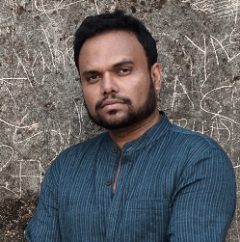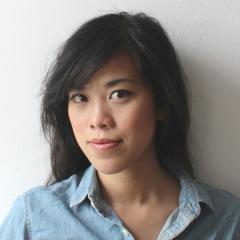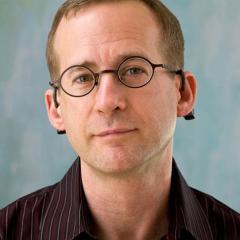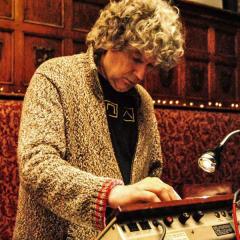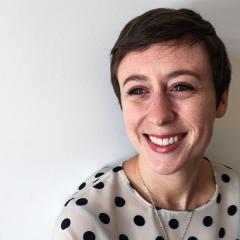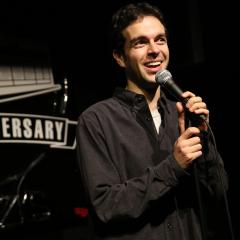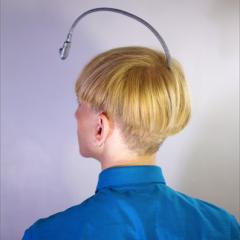Spring 2016
Moses Tulasi
Moses Tulasi was born and brought up in a small town, Warangal in the state of Telangana, India, and inspired by the Hindi parallel cinema that had social relevance. While pursuing a career in technology in the U.S., Moses had also served on the board of Trikone-Chicago for six years, a support group for LGBT individuals of South Asian heritage and allies. In the winter of 2014, Moses took a sabbatical from work and traveled to India, tracing his roots back, in search of a socially relevant subject for his first film. Moses was inspired to give a platform to the socio-politically charged queer rights movement in the city of Hyderabad, set against the backdrop of a recently successful social movement which led to the formation of a brand new state in India, Telangana. This is how the documentary film “Walking the Walk” was made.
Screening on February 11: “Screening of Moses Tulasi’s Walking the Walk”
Stephanie Foo
Stephanie Foo is a producer at “This American Life.” Prior to that, she was one of the original producers of “Snap Judgment.” Her work has also been featured on podcasts like “99% Invisible” and “Reply All.” She’s one of the co-creators of TAL’s Audio Hackathon. Follow her at @imontheradio.
Lecture on February 23: “How to Tell Great Stories on the Radio”
Michael Chorost
Dr. Chorost is a book author and public speaker. His first book, Rebuilt: How Becoming Part Computer Made Me More Human (Houghton Mifflin, 2005), is a memoir of going deaf and getting a cochlear implant. It won the PEN/USA Award for Creative Nonfiction in 2006 and was applauded by the L.A. Times as “the first cyborg memoir.” His second book, World Wide Mind (Free Press, 2011), is about the science of brain-scanning and the prospect of enabling direct communication from one brain to another. He has written for Wired, Technology Review, New Scientist, Slate, the Chronicle for Higher Education, and many others. He has a B.A. from Brown University and a Ph.D. in digital humanities from the University of Texas at Austin. After graduating in 2000, he worked at a dot-com in San Francisco and then at SRI International, a research institute in Silicon Valley. He now lives in Washington, D.C. with his wife and their two cats. He is working on his third book.
February 22–26: “First Sonic Cyborg Residency—featuring Michael Chorost and Trevor Pinch”
In the News: Sonic cyborgs are coming to Vassar, February 24–26, 2016, Cyborgism, relationship with tech under the microscope
Lecture on February 24: “What It’s Like to Go Deaf and Get Your Hearing Back with an Implanted Computer (and What That Means for Theory)”
Joint Event with Trevor Pinch on February 25: “Public Conversation with Michael Chorost and Trevor Pinch”
Trevor Pinch
Trevor Pinch is the Goldwin Smith Professor of Science and Technology Studies and Professor of Sociology at Cornell University. He holds degrees in physics and sociology. He has authored many books and numerous articles on aspects of the sociology of science, the sociology of technology, the sociology of economics, and sound studies. His books include Analog Days: The Invention and Impact of the Moog Synthesizer and he is co-editor of the Oxford Handbook of Sound Studies. He is also a musician playing ancient synthesizers with The Electric Golem, The Eric Ross Ensemble, and the Atomic Forces.
Lecture on February 26: “In the Moog: Understanding How the Electronic Music Synthesizer Became a New Instrument”
Annea Lockwood
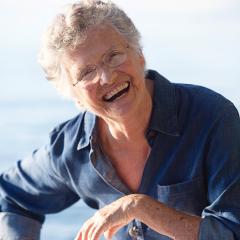
Annea Lockwood (b. NZ), now a professor emerita, was on the music faculty at Vassar College until 2001. As a composer, she is known for her explorations of natural acoustic sounds and environments in works ranging from sound art and installations to concert music. Her music has been presented in many venues and festivals including: MACBA Barcelona, the Other Minds Festival, the Walker Art Center, Queen Elizabeth Hall, Issue Project Room, Sonic Acts XIII, and the Tectonics Festival 2015, New York. Recent work includes Wild Energy, a collaboration with Bob Bielecki, a site-specific multi-channel installation focused on geophysical, atmospheric, and mammalian infra and ultra sound sources, created for the sound art exhibition, A Garden of Sonic Delights, at Caramoor, New York.
Lecture and Installation on March 2: “A Sound Map of the Housatonic River”
In the News: CAAD hosts soundscape artist
Audrey Quinn
Audrey Quinn is a Brooklyn-based multimedia journalist and audio producer. Radio shows she’s worked with include NPR’s Planet Money, 99% Invisible, Marketplace, Freakonomics, Life of the Law, and Studio 360. Her investigative work has been awarded by the Fund for Investigative Journalism and The Nation Institute’s Investigative Fund and published in the New York Times. She has been a teaching associate for the Transom Story Workshop and co-founder of the live radio performance event Radio Cabaret, and she’s helped launch podcasts at BuzzFeed, Slate, Runner’s World, and the Leakey Foundation. She is also an adjunct professor at the NYU School of Journalism.
Lecture on March 10: “Radical Authenticity: Finding Your Voice in Audio Reporting”
Chris Duffy
Chris Duffy is an NYC-based comedian who performs across the country. His shows have been featured in The New York Times, Boston Globe, Washington Post, and The Onion A.V. Club. Chris is the creator and host of You’re the Expert, a live show, podcast, and public radio program on Boston’s WBUR where three comedians try to guess what a scientist studies all day. In addition to comedy, Chris is a writer whose work has appeared in the Boston Globe, Makeshift Magazine, and Wag’s Revue. Chris is both a former fifth-grade teacher and a former fifth-grade student.
Lecture on April 7: “From Idea to Live Show to Public Radio as an Independent Artist (Who is Not a Millionaire)”
Neil Harbisson
Neil Harbisson is a Catalan-raised, British-born contemporary artist and cyborg activist best known for having an antenna implanted in his skull and for being officially recognized as a cyborg by a government. The antenna allows him to perceive visible and invisible colors such as infrareds and ultraviolets via sound waves. The antenna’s internet connection allows him to receive colors from space as well as images, videos, music, or phone calls directly into his head via external devices such as mobile phones or satellites. Harbisson identifies himself as a cyborg, he feels both his mind and body are united to cybernetics. He doesn’t feel he is using or wearing technology, instead, he feels he is technology. His artworks investigate the relationship between color and sound, experiment the boundaries of human perception, and explore the use of artistic expression via sensory extensions. In 2010 he cofounded the Cyborg Foundation with Moon Ribas, an international organization that aims to help humans become cyborgs, defend cyborg rights and promote cyborgism as a social and artistic movement.
April 11–15: “Second Sonic Cyborg Residency—featuring Neil Harbisson and Marco Donnarumma”
Lecture on April 11: “Life in the Age of Cyborgs”
Joint Event with Marco Donnarumma on April 13: “Public Conversation with Neil Harbisson and Marco Donnarumma”
Marco Donnarumma
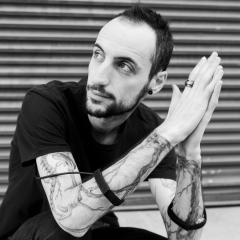
Marco Donnarumma (b. 1984) is a performance artist, sound artist, musician, and writer. He has played interactive music by amplifying sounds from his body, has induced visitors into altered states of self-perception by feeding sounds from their bodies back to their skulls and bones, has immersed audiences in multichannel sound and video produced by the strain of his muscles while he pulled 50Kg stones, and has physicalized digital viruses in the body. He uses human bodies and machines as materials. Working with biophysical media, that is, biomedical technologies, sound devices, computer software, sensor, and transducers, he creates artworks where human bodies and machines extend, transform or disrupt each other. His live performances, concerts, and installations are renowned for combining rigorous science, technical sophistication, and critical concepts into intense live experiences.
Event on April 14: “Marco Donnarumma Performance of Corpus Nil”
Joe Richman
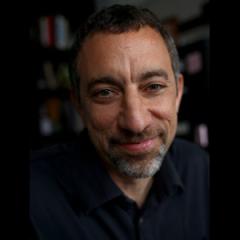
Joe Richman is a Peabody Award-winning producer and reporter and the founder of Radio Diaries, a non-profit organization. For two decades, Radio Diaries has helped to pioneer a model for working with people to document their own lives for public radio. Joe has collaborated with teenagers and octogenarians, prisoners and prison guards, bra saleswomen and lighthouse keepers to create award-winning productions including: Teenage Diaries, Prison Diaries, My So-Called Lungs, New York Works, Thembi’s AIDS Diary, Mandela: An Audio History, Willie McGee and the Traveling Electric Chair, and Teen Contender. Joe has worked as a producer on the programs All Things Considered and This American Life. He also teaches at Columbia University’s Graduate School of Journalism. The LA Times called Joe “a kind of Studs Terkel of the airwaves.”
Lecture on April 14: “Telling the Extraordinary Stories of Ordinary Life”
Mark Dion
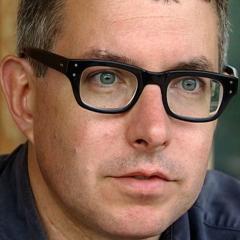
Born in Massachusetts in 1961, Mark Dion currently lives in New York City. He received a BFA and an honorary doctorate from the University of Hartford School of Art, Connecticut in 1986 and 2003, respectively. He also studied at the School of Visual Arts in New York from 1982–84 and participated in the Whitney Museum of American Art’s Independent Study Program from 1984–85. He has received numerous awards, including the ninth annual Larry Aldrich Foundation Award (2001) and the Smithsonian American Art Museum’s Lucida Art Award (2008). Presently, he is a mentor at Columbia University in New York and co-director of Mildred’s Land, an innovative visual art education and residency program in Beach Lake, Pennsylvania. He lives with his wife, the artist Dana Sherwood in New York City and works worldwide.
Event on May 26: “Opening of Universal Collection: A Mark Dion Project”
